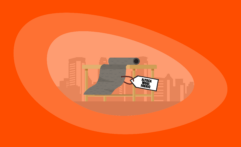10 Most Sustainable Spandex Clothing Brands: The Conscious Consumer’s Guide
Affiliate Disclosure
Hey fellow impactful ninja ?
You may have noticed that Impactful Ninja is all about providing helpful information to make a positive impact on the world and society. And that we love to link back to where we found all the information for each of our posts.
Most of these links are informational-based for you to check out their primary sources with one click.
But some of these links are so-called "affiliate links" to products that we recommend.
Why do we add these product links?
First and foremost, because we believe that they add value to you. For example, when we wrote a post about the environmental impact of long showers, we came across an EPA recommendation to use WaterSense showerheads. So we linked to where you can find them. Or, for many of our posts, we also link to our favorite books on that topic so that you can get a much more holistic overview than one single blog post could provide.
And when there is an affiliate program for these products, we sign up for it. For example, as Amazon Associates, we earn from qualifying purchases.
What do these affiliate links mean for you?
First, and most importantly, we still only recommend products that we believe add value for you.
When you buy something through one of our affiliate links, we may earn a small commission - but at no additional costs to you.
And when you buy something through a link that is not an affiliate link, we won’t receive any commission but we’ll still be happy to have helped you.
What do these affiliate links mean for us?
When we find products that we believe add value to you and the seller has an affiliate program, we sign up for it.
When you buy something through one of our affiliate links, we may earn a small commission (at no extra costs to you).
And at this point in time, all money is reinvested in sharing the most helpful content with you. This includes all operating costs for running this site and the content creation itself.
What does this mean for me personally?
You may have noticed by the way Impactful Ninja is operated that money is not the driving factor behind it. It is a passion project of mine and I love to share helpful information with you to make a positive impact on the world and society. However, it's a project in that I invest a lot of time and also quite some money.
Eventually, my dream is to one day turn this passion project into my full-time job and provide even more helpful information. But that's still a long time to go.
Stay impactful,
Amid growing concerns about the textile industry’s environmental impact, there is pressure to find greener clothes for your wardrobe. Spandex is traditionally made with fossil-derived materials, leading to environmental pollution and adverse climate impacts. Yet, spandex offers form-fitting clothes with essential stretch elements that are hard to forego. So, we had to ask: Which are the most sustainable spandex clothing brands?
The most sustainable spandex clothing brands include Patagonia, hernest project, and MUD Jeans, which use low-impact materials, employ full traceability, and strive for textile circularity. In addition, Anekdot and Boyish commit to reducing carbon footprints and textile waste.
Whether you are searching for a pair of stretch denim jeans, a set of lingerie, or some activewear to add to your wardrobe without negatively impacting the soil, the water, the animals, and other people, there is a brand for you. So, let’s keep reading to learn more about the most sustainable spandex clothing brands and how they ensure sustainable, ethical practices.
Here’s How Sustainable Spandex Fabrics Generally Are
Spandex is a synthetic textile with stretch properties, also referred to as “elastane” and Lycra®. The material is generally considered unsustainable because of the energy-intensive and high-polluting manufacturing processes and the limited options at the end of the fabrics’ life. It is ranked Class E—the least sustainable fiber class, according to Common Objective’s Made-By Environmental Benchmark for Fibres.
“Sustainable: The ability to be maintained at a certain rate or level | Avoidance of the depletion of natural resources in order to maintain an ecological balance”
Oxford Dictionary
To understand the sustainability of spandex, we’ve assessed the life-cycle and each stage’s sustainability. This life-cycle assessment (LCA) is a method to evaluate the environmental impacts of products and materials. Here’s a quick summary of our LCA of spandex!
What makes sustainable spandex: Recycled or upcycled spandex fabrics are considered sustainable because re-circulating plastic or textile waste that would otherwise take up space in landfills for centuries or get into marine environments has much lower impacts than extracting more fossil fuels to make virgin spandex. LYCRA® T400® EcoMade, for example, is a variety of sustainable spandex made with recycled materials and plant derivatives.
Additionally: Bio-based spandex is also considered sustainable because it replaces nonrenewable fossil-derived materials with renewable plant materials.
Here’s How We Selected the Most Sustainable Spandex Clothing Brands
The brands on this list were chosen based on their commitment and actions to promote sustainable practices while reducing the environmental impacts of the textile industry.
They are transparent about their materials, processes, and workforce management within their supply chain.
Some brands focus their efforts on reducing waste and optimizing natural resources while others strive to reduce the carbon footprint of their clothes.
All of these brands share the commitment to reshape the textile industry toward a more sustainable and Earth-friendly sector.
These Are the 10 Most Sustainable Spandex Clothing Brands
Most Sustainable Spandex Clothing Brands
Overall, these spandex clothing brands are sustainable. Yet, they take various approaches to reduce environmental impacts and uphold ethical standards. Let’s dive into each brand and find out more.
Patagonia: Everyday Wear for Those Who Care
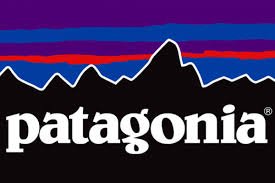
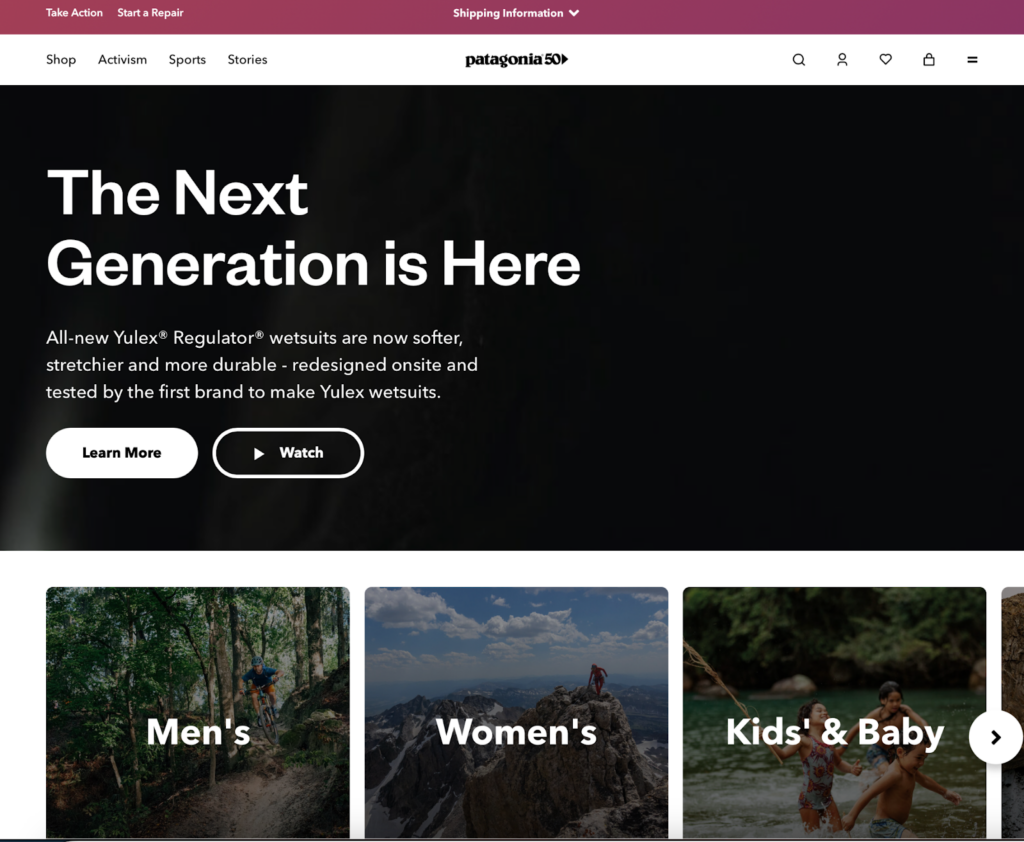
“Together, we can prioritize purpose over profit and protect this wondrous planet, our only home.”
Patagonia
🌎
How do they ensure their sustainability?
Patagonia puts sustainability at the center of their operation. They work to reduce, rather than simply offset, carbon emissions where it matters the most: in the supply chain and material manufacturing. They reduce their carbon footprint by removing high-impact virgin fossil-based fibers from their collections, using “Environmental Profit and Loss” to guide their production decision, and helping their suppliers to cut emissions. Patagonia’s fall 2023 collections are made up mostly of preferred materials (91% by fabric weight), including Regenerative Organic Certified fibers, hemp, man-made cellulose fibers, recycled cotton, and recycled polyester. Regarding spandex (elastane), Patagonia experimented with pre-consumer recycled versions of spandex and first added recycled spandex into their line in 2020. On top of that, Patagonia’s Worn Wear Program encourages customers to repair and recycle their products, extending the textile lifecycle and reducing waste. Lastly, Patagonia is certified as a B Corporation and a Bluesign® brand.
🌐
How do they ensure their ethics?
Patagonia commits to fair trade practices. Through the partnership with Fair Trade USA, they currently produce 86% of their clothes in 20 Fair Trade Certified™ factories. Patagonia pays a premium for every item produced in such factories, accumulating in a fund for workers to use in their chosen community projects, whether in healthcare or parent support or to withdraw as a cash bonus. Additionally, they have various social responsibility programs to prevent harm and create positive impacts on the lives of apparel workers in their supply chain. These include the Fair Labor Association, the Living Wage Program, the Migrant Workers Program, and the Responsible Purchasing Practices. Patagonia is fully transparent about the locations of their facilities and suppliers.
🤝
Are they part of any giving-back programs?
Since 1985, Patagonia has pledged 1% of sales annually to environmental causes. They have awarded over $89 million in cash and in-kind donations to domestic and international grassroots environmental groups, making a difference in their local communities. In 2022, the founder of Patagonia gave away his family’s ownership of the company to the newly created Patagonia Purpose Trust and the not-for-profit organization Holdfast Collective, ensuring that all future profits from the company are used to fight the climate and extinction crisis.
🛍️
What is their product range?
- Best for: kidswear, menswear, womenswear
- Product range: shirts, pants, jackets, blazers, hoodies, sweatshirts, T-shirts, shorts, plus-size
- Price range: $$$
- Size range: XXS–XXXL
hernest project: Sustainably Made Sleepwear and Loungewear

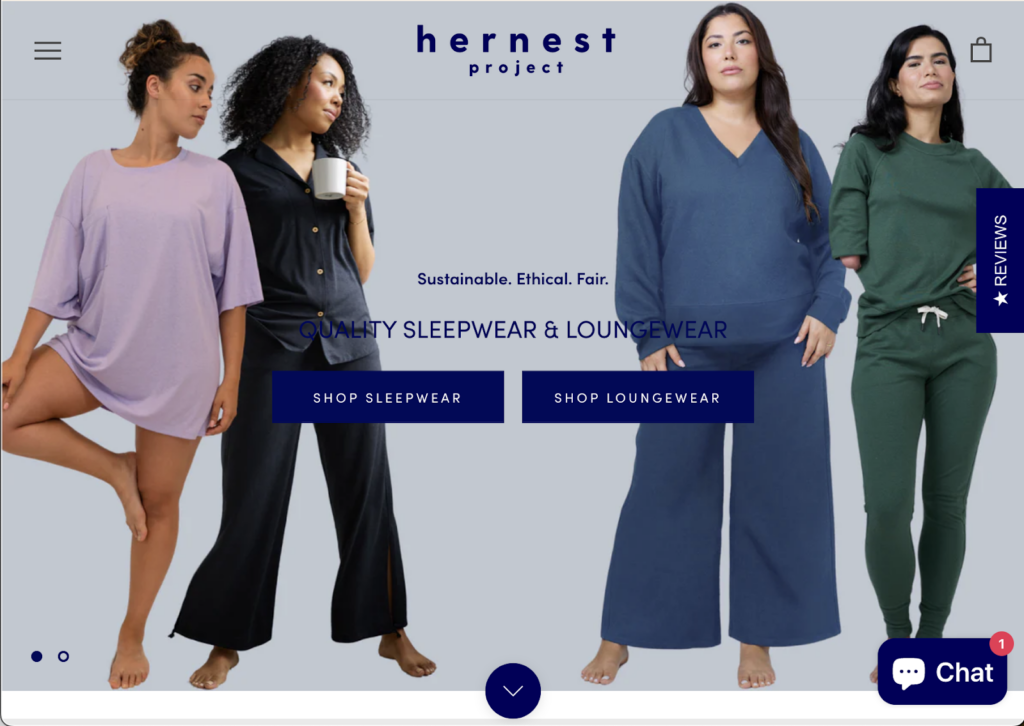
“We cause zero harm. This means that we do not contribute to the systemic increase in substances extracted from the earth’s crust, to the accumulation of compounds that do not break down in nature, to degradation of natural systems and to the barriers that prevent people from meeting their needs.”
hernest project
🌎
How do they ensure their sustainability?
hernest project ensures sustainability by sourcing a high proportion of low-impact materials, reducing textile waste, and offsetting carbon emissions to reach carbon neutrality. Firstly, all their fabrics bear OEKO-TEX® STANDARD 100 certification and feature Bluesign®-approved dyes. Low-impact plant-derived and plant-based TENCELTM, recycled cotton, and organic cotton account for the highest proportions of their collection (37%, 21%, and 21%, respectively). Additionally, they lessen the burden on earth resources by using recycled fabrics, including recycled lyocell, recycled linen, and recycled spandex. Regarding packaging, hernest project uses compostable garment protectors, brief liners, eCom mailers, and organic cotton brand tags. Secondly, they cut down textile waste by operating on limited runs, employing cutting-edge and computer-aided programs to minimize offcuts in the production process, and having their production supplier recycle all offcuts. Excess fabric is made into scrunchies. Additionally, hernest project designs are based on slow-fashion principles of timelessness and versatility. They strive towards circularity by partnering with Treet to facilitate the sale of pre-loved garments. Last but not least, they invest in offset projects such as renewable energy, forest conservation, and energy efficiency to ensure that every item ordered and sold on their site is carbon neutral.
🌐
How do they ensure their ethics?
hernest project ensures their ethics by binding their supplier with a Code of Conduct, covering all of the ILO’s Fundamental Principles and Rights at Work. They also have traceability for their Tier 1 and Tier 2 suppliers.
🤝
Are they part of any giving-back programs?
hernest project works with women’s shelters to donate returns and samples of clothes.
🛍️
What is their product range?
- Best for: womenswear
- Product range: tops, cardigans, crewnecks, joggers, pants, shorts, tanks, T-shirts, sleepwear, loungewear, plus-size
- Price range: $$
- Size range: XXS–3XL
MUD Jeans: Quality Jeans Made Ethically With Organic and Denim

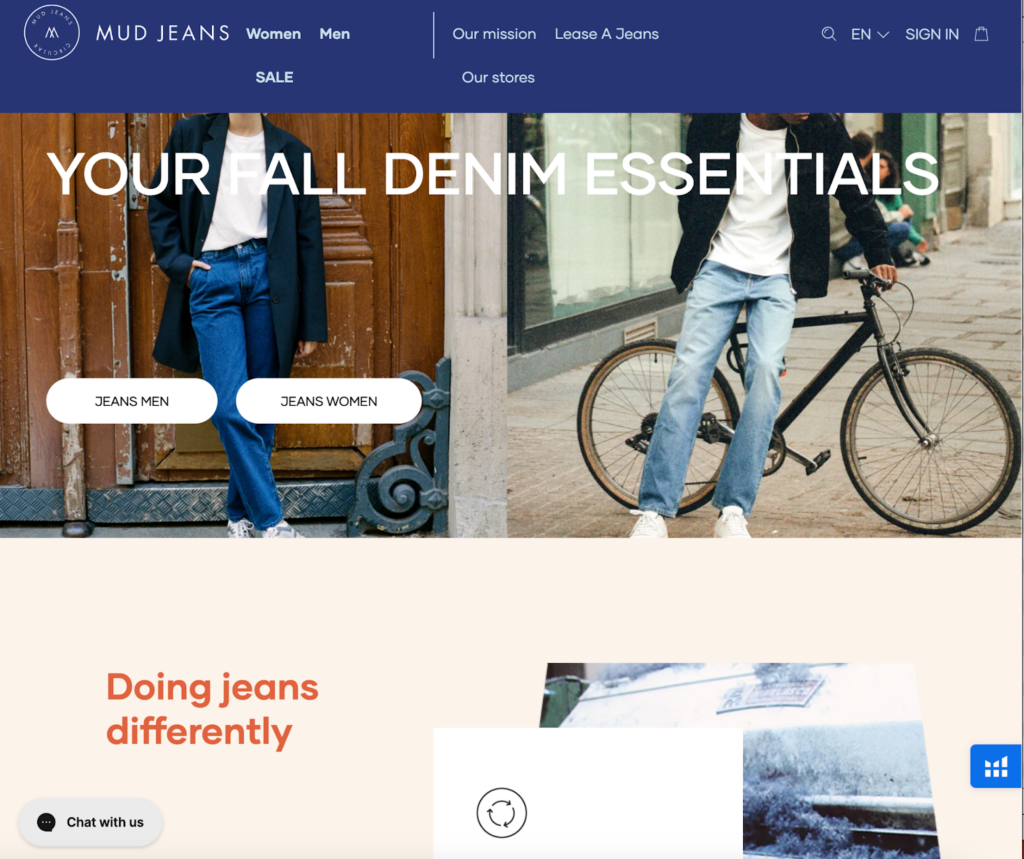
“With our circular philosophy, we want to design our products in a way that they can be reused, recycled and upcycled easily.”
MUD Jeans
🌎
How do they ensure their sustainability?
MUD Jeans prioritizes sustainability by committing circular principles in every step of the life cycle of their denim products, including design, materials, production techniques, and end-of-life. They recycle fabrics and water across the supply chain. Their factory’s laundry recycles 95% of their water through reverse osmosis. Most of their jeans are made from a mix of low-impact certified organic cotton, up to 40% post-consumer recycled cotton (recovered from jeans they take back), and a maximum of 2% recycled spandex (also known as elastane). MUD Jeans also replaces PP spray with Cradle2Cradle indigo dye to make their product toxin-free. They are transparent about the environmental impacts of their clothes by sharing their annual life cycle analysis, which includes the methods they used to lower their water and carbon footprint. Furthermore, their “Lease a Jeans” program encourages consumers to own less and recycle more.
🌐
How do they ensure their ethics?
MUD Jeans is fully transparent about their manufacturing processes, maintaining fair conditions for workers. They consciously maintain a small supply chain of three recyclers, three fabric producers, and one jeans manufacturer, enabling clear oversight over who makes their jeans, how, and under what conditions. They uphold all their main supply chain partners to their Code of Conduct, which covers the ILO’s Four Fundamental Freedoms principles.
🤝
Are they part of any giving-back programs?
MUD Jeans partners with Justdiggit to regenerate trees and revive deforested areas. For every pair of jeans sent back to them, they donate that pair to Justdiggit to restore one tree. The non-profit organization uses a special pruning technique to regenerate forgotten tree stumps in previously deforested areas in Sub-Saharan Africa, bringing back trees, increasing carbon sequestration, cooling down the site, increasing water retention, and promoting biodiversity.
🛍️
What is their product range?
- Best for: womenswear, menswear
- Product range: jeans, jackets, shirts, shorts, skirts, accessories
- Price range: $$
- Size range: XS–XL
Anekdot: Uncycled Intimate Wear Made With Surplus Fabrics

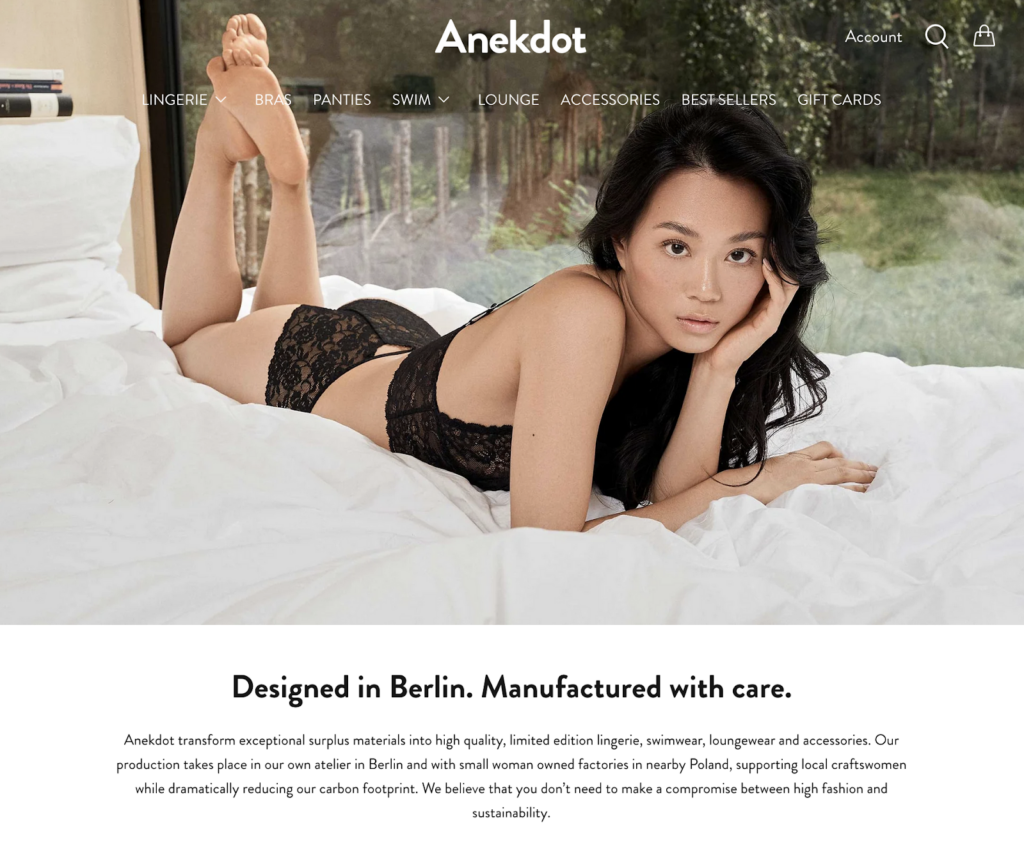
“We source our superb materials from production leftovers, end of lines, offcuts, deadstock and vintage trimmings turning them into something beautiful and meaningful for your everyday life.”
Anekdot
🌎
How do they ensure their sustainability?
Anekdot ensures their sustainability by upcycling textile materials, driving textile waste toward zero, and promoting slow, considerate fashion practices. They source materials for their apparel from production leftovers, end-of-lines, offcuts, deadstock, and vintage trimmings. For example, their Full Moon Longline Bralette is made with 90% upcycled nylon and 10% upcycled spandex, sourced from surplus in Italy. For the packaging, they recycled paper and compostable mailers that are carbon-negative, biodegradable, and partly made from corn starch. No plastics whatsoever! Secondly, Anekdot sources their materials first and designs later to maximize fabric use. They cut around small defects and create their patterns in a way that minimizes offcuts, striving for zero-waste production. Small textile scraps are used to make small accessories, special patchwork projects, and pilling for pillows. Lastly, they set an example of boycotting fast fashion by operating a made-to-order system, making their apparel seasonless, and using Black Friday to shed light on the consequences of short-lived impulse purchases and consumption from mass-producing, cheap fashion brands.
🌐
How do they ensure their ethics?
Anekdot visits their suppliers regularly. Their manufacturing partners are located in the EU, a low/medium-risk region for labor abuse.
🤝
Are they part of any giving-back programs?
Anekdot donates their textile surplus to art and education refugee projects at Tempelhof Airport and S27. During the Black Friday week of 2020, they donated 10% of sales to Drip By Drip to install bio-sand filters for communities in Bangladesh to access clean drinking water.
🛍️
What is their product range?
- Best for: womenswear
- Product range: swimwear, bra tops, underpants, loungewear, accessories
- Price range: $$$
- Size range: XS–XL
Boyish: Sustainable Women’s Denim Centered on Vintage Silhouettes With a Modern Update

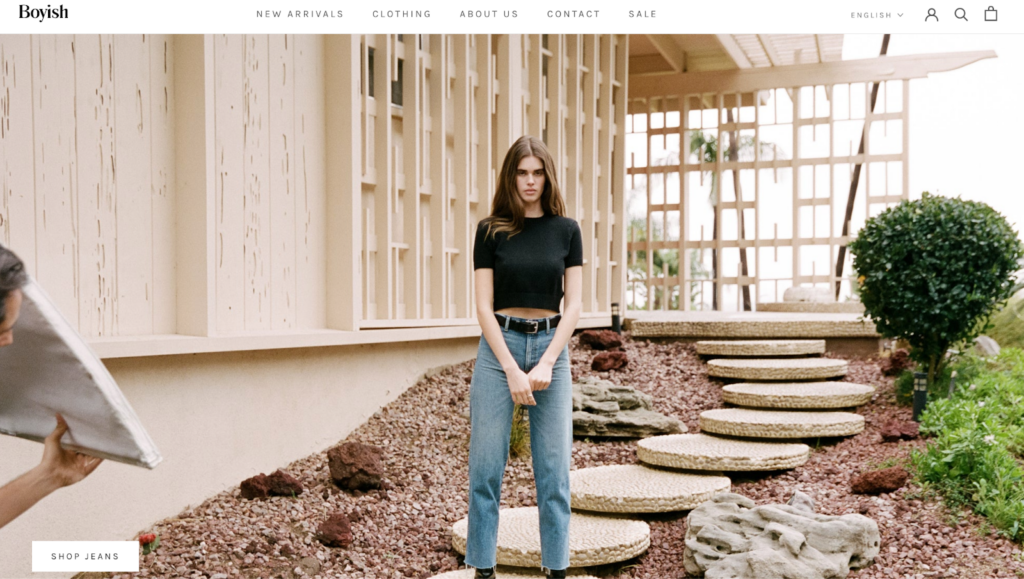
“All jeans are produced with sustainable fabrics through a completely environmentally-friendly and cruelty-free process.”
Boyish
🌎
How do they ensure their sustainability?
Boyish ensures sustainability by focusing on low-impact fabrics and environmentally friendly, cruelty-free processes. A high proportion of their collections are made with zero-waste materials, particularly recycled cotton, deadstock fabrics, cutting waste, recycled paper (for hang tags), and recycled metal (for buttons, rivets, and other hardware). They build their denim jeans on GRS-certified recycled fabrics and OCS-certified organic cotton. For the stretch elements, Boyish sources plant-based biodegradable TENCEL™ lyocell, REFIBRATM, and recycled spandex (elastane) to replace traditional virgin plastic fibers. Further down the life-cycle in the manufacturing stage, Boyish focuses on using less harmful chemicals during the dyeing and washing process. Specifically, their production relies on natural plant-based dyes, low-sulfate indigo dyes, ozone wash, faux stone wash, and nanobubbles. Additionally, they reduce water usage to one-third of the amount typically needed to produce a pair of jeans by recycling water, reducing dip times, neutral enzymes, vapor water, and laser machine finishing. Lastly, Boyish delivers their products in 100% compostable shipping bags that break down in less than a year.
🌐
How do they ensure their ethics?
Boyish ensures their ethics by keeping a transparent and simple supply chain. All suppliers sign a Code of Conduct that covers the ILO’s Four Fundamental Freedoms principles. Some of their suppliers are certified by Sedex Members Ethical Trade Audit – SMETA Best Practice Guidance. Boyish makes annual visits to the factories and the farms where they source their organic cotton to meet the people who craft their jeans. They also partner with Intertek for third-party auditing.
🤝
Are they part of any giving-back programs?
Boyish is not known to be part of any giving-back programs.
🛍️
What is their product range?
- Best for: womenswear
- Product range: jackets, jeans, overalls, shirts, skirts, dresses, shorts
- Price range: $$$
- Size range: XXS–XL
ASKET: Timeless Clothes Made Under Full Transparency and With Life-Cycle Responsibility
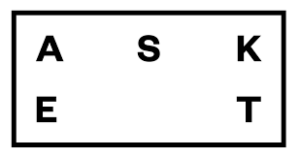
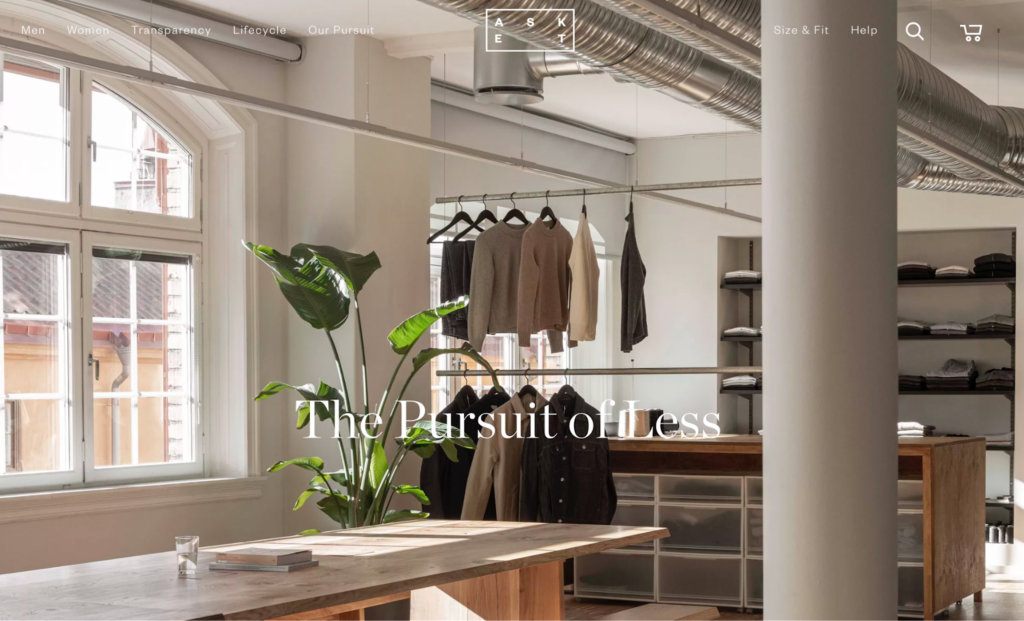
“Our mission is to end overconsumption and restore value to the clothing industry.”
Jakob Dworsky, founder of ASKET
🌎
How do they ensure their sustainability?
ASKET ensures sustainability by reducing waste and using less energy throughout the life-cycle of their garments. They tackle the textile waste problem with their Repair Program that helps keep clothes last longer and their Revival Program that diverts used garments from landfills to be repaired, renewed, resold, or recycled. On top of that, they use various recycled fabrics, including recycled wool, recycled cotton, recycled silk, recycled polyester, recycled nylon, and (a very small percentage) of recycled elastane. ASKET also runs a Care Program, helping consumers keep their garments fresh longer while using less energy, lowering the environmental impact of the usage stage. In an effort to encourage consumers to buy and waste less, they are fully transparent about the environmental impact of their clothes.
🌐
How do they ensure their ethics?
ASKET maintains ethics through fair labor practices, responsible sourcing, and a commitment to transparency in their supply chain. In 2022, their average traceability score across their entire collection was 96.0%.
🤝
Are they part of any giving-back programs?
ASKET is not known to be part of any giving-back programs.
🛍️
What is their product range?
- Best for: high-quality, essential, versatile wardrobe pieces
- Product range: tops, sweaters, pants, chinos, jackets, coats, socks, underwear
- Price range: $$$
- Size range: XS–XXL
PANGAIA: Comfort-Focused Clothing Made Sustainably With Innovative Textiles
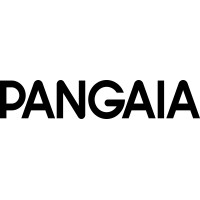
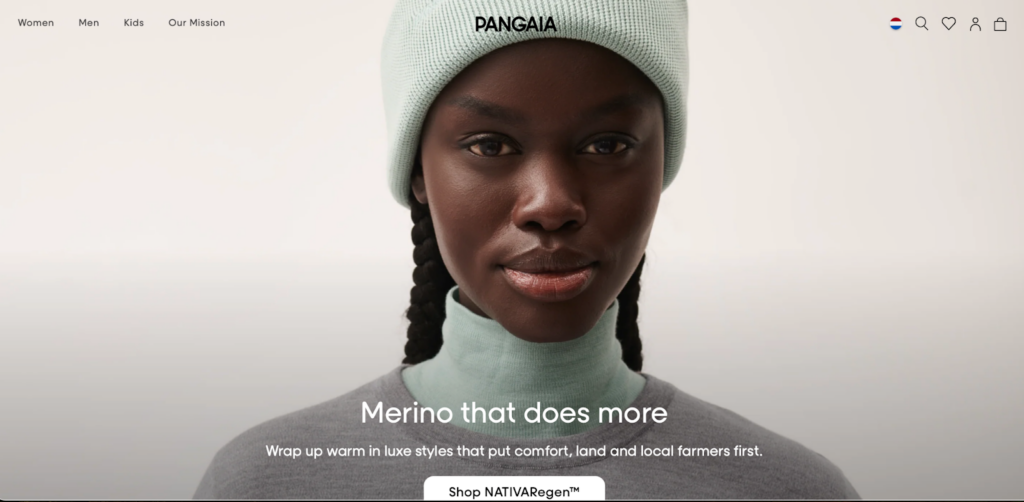
“ Every product we create is born from science and purpose, each solving an environmental problem of the industry. ”
PANGAIA
🌎
How do they ensure their sustainability?
PANGAIA ensures sustainability by diversifying materials options and shifting toward circular systems in which they regenerate nature, design out waste and pollution, and keep products and materials in use. Regarding sourcing materials, they opt for low-impact materials from nature and introduce new and lower-impact alternatives when possible, for example, by replacing animal leather with vegan leather. PANGAIA established their Preferred Material List (PML), which is diligently assessed based on a variety of criteria, including end-of-life pathways, visibility of the supply chain and raw material inputs, LCA results, certifications, chemical and water intensity, recycled and diverted waste streams, geographical provenance, end-use of the material, and performance against conventional alternatives. In 2022, 29% of PANGAIA’s collections were made with the top two most sustainable materials on this list, which includes natural fabrics made fully with organic cotton, regenerative cotton, organic linen, organic hemp, organic kapok, regenerative cashmere, and recycled cashmere. They also make use of innovative materials to replace high-impact traditional fabrics, for example, plant-based, ethically-sourced FLWRDWN™ to replace goose and duck down, FRUTFIBER™ to replace conventional cotton, bio-based material MIRUM® and VEGEA to replace animal and synthetic leather, and part plant-based spandex to replace traditional virgin plastic stretch elements. Further down the life-cycle in the manufacturing stage, PANGAIA applies innovative treatments to reduce waste and water use. These include AIR INK®, miDori® bioWick, and the bioengineered dye technology COLORFIX.
🌐
How do they ensure their ethics?
PANGAIA binds suppliers in a Code of Conduct that covers all of the ILO’s Four Fundamental Freedoms principles. They also make statements regarding Diversity and Inclusion, Modern Slavery, Child Labour & Young Workers Policy, and Human Rights Policy. Furthermore, they trace most of their supply chain, including all of the final stages of production. In 2022, they extended their transparency by mapping and publishing their Tier 1 subcontractors and Tier 2 suppliers while having 95% of their suppliers audited by a third party.
🤝
Are they part of any giving-back programs?
PANGAIA has been part of various philanthropic programs since their inception. They plant a mangrove tree for every product sold. PANGAIA is a member of 1% for the Planet, meaning that with every product you buy from PANGAIA, a sum is going to support the planet in one way or another. For example, through their partnership with Milkywire, PANGAIA launched two grassroots funds, Tomorrow Tree and Bee the Change, working collaboratively with communities in various conservation initiatives. They also partner with Coral Gardeners, an organization dedicated to saving our oceans’ coral reefs, which are in rapid decline. Additionally, they provide financial and in-kind support for humanitarian causes such as support for refugees and displaced people, racial justice and LGBTQIA+ rights, frontline workers, and young people.
🛍️
What is their product range?
- Best for: womenswear, menswear, kidswear
- Product range: hoodies, knitwear, outerwear, sweatshirts, tops, T-shirts, pants, denim, shorts, activewear, gloves, hats, socks, accessories
- Price range: $$$$
- Size range: XS–XL
Dear Denier: Circularity-Focused Activewear and Lingerie Brand


“Dear Denier exists to bring about change that benefits industry and society as a whole, by combining fashion, science and decency.”
Dear Denier
🌎
How do they ensure their sustainability?
Dear Denier‘s approaches to sustainability center on circularity. Their products are made mainly with recycled fabrics, including recycled nylon (Q-Nova® by Fulgar), recycled spandex (Roica EcoSmart™ by AsahiKASEI), and recycled cashmere. Additionally, Dear Denier uses low-impact natural fabrics, for example, GOTS-certified organic cotton, GOTS-certified silk, and GOTS- and RWS-certified merino wool. Their recycling incentive and take-back program close the loop by enabling consumers to send or drop off pre-loved nylon socks and tights from any brand to their recycling partners’ stores while teaming up with scientists from the Danish Technological Institute to figure out the best and most sustainable way to recycle nylon stockings in order to prevent them from ending up in landfills or incinerators. Furthermore, Dear Denier has apparel made in Italy’s zero-waste factories, using locally sourced materials and waste-free 3D knitting technologies. Their manufacturing factories are powered mainly by renewable energy. Lastly, product longevity is at the top of their focus hierarchy, guiding their design decisions. They constantly improve their designs, techniques, and materials to prolong the lifespan of their products, reducing the environmental cost per use. Other incentives to reduce the environmental impacts are opting for delivery trucks over planes, using recycled packaging, and compensating 400 grams of CO2 from CHOOOSE for each product they sell.
🌐
How do they ensure their ethics?
Dear Denier has a Code of Conduct covering four of the ILO’s Fundamental Principles and Rights at Work. Additionally, they are transparent about the people making their clothes. They ensure that workers in their manufacturing factories are paid a living wage. Some of their suppliers are certified by Workplace Condition Assessment (WCA).
🤝
Are they part of any giving-back programs?
Dear Denier is not known to be part of any giving-back program.
🛍️
What is their product range?
- Best for: womenswear
- Product range: tights, socks, activewear, lingerie
- Price range: $$$
- Size range: S–XL
Kuyichi: Made-To-Last, Timeless Denim Clothing Items


“At Kuyichi we take great care in the design of our pure goods focusing on the development of timeless products that can become your favourite. Not only do they have to stand the continuous change of trends, but they should also be worn until they tear. We choose high-quality materials and work on the longevity of our jeans constantly to achieve this. ”
Kuyichi
🌎
How do they ensure their sustainability?
Kuyichi’s sustainability efforts start with sourcing a high proportion of low-impact materials. They prioritize organic fibers, including GOTS-certified cotton, linen, and hemp, as well as recycled fibers, including recycled cotton, recycled polyester, and recycled spandex (LYCRA® T400® EcoMade). Additionally, Kuyichi uses responsibly made, circular, regenerated cellulose fibers (lyocell and modal) from Lenzing. Further down the life-cycle in the manufacturing stage, Kuyichi reduces their environmental impacts by using renewable energy in their supply chain and employing low-impact washing techniques like laser, ozone, and e-flow machinery. They also avoid fabric waste during production by either increasing production quantities or using leftovers in a different style. At the end of a Kuyichi product’s life, consumers can either hand it to the Kuyichi x Indigo Ravens shop to be reworked into other pieces or post it back to Kuychi to be repaired, refurbished, and sold again. Their Give-Back Program offers store credit for the returns of Kuyichi items. Lastly, they offset their carbon emissions by partnering with the Climate Neutral Group.
🌐
How do they ensure their ethics?
Kuyichi is a member of the Fair Wear Foundation and has annual brand performance checks by the organization. They also pledge transparency in their supply chain and submit the list of their suppliers on Open Supply Hub. They monitor health and safety issues by visiting all of their suppliers responsible for their final stage of production. Additionally, their Supplier Code of Conduct covers all of the ILO’s Fundamental Principles and Rights at Work.
🤝
Are they part of any giving-back programs?
Instead of holding sales on Black Friday, Kuyichi donates a percentage of their sales to good causes. In 2022, they donated 20% of the Black Friday Weekend’s revenue to their local Utrecht food bank (voedselbank).
🛍️
What is their product range?
- Best for: womenswear, menswear
- Product range: jeans, pants, T-shirts, shirts, sweaters, knitwear, skirts, shorts, dresses, jackets, accessories
- Price range: $$
- Size range: XS–XL
Nudie Jeans: Sustainable Denim Jeans Come With Free Repair for Life

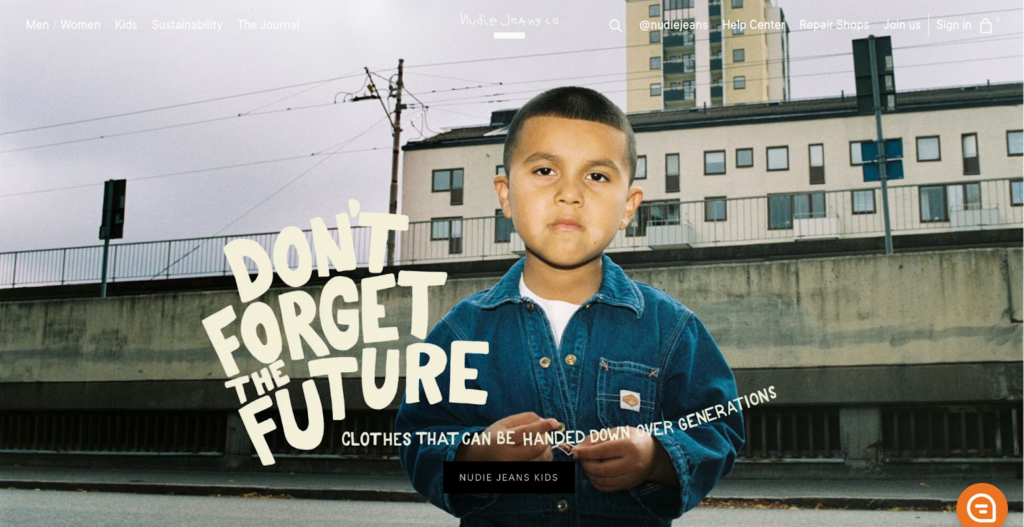
“When we started Nudie Jeans in 2001, we decided that environmental awareness and human rights would permeate everything we did.”
Maria Erixon, Co-Founder of Nudie Jeans
🌎
How do they ensure their sustainability?
Nudie Jeans promotes sustainability by sourcing a high proportion of low-impact materials, including organic cotton and recycled cotton. Of all fibers they used in 2022, 95,6% were organic, certified, or recycled fibers. 2022 was the sixth full year in which Nudie Jeans used exclusively certified organic cotton in all their cotton products. In their stretch denim options, they use between 1–3% recycled spandex. Additionally, they ensure their sustainability by using renewable energy in their supply chain to reduce their carbon footprint. Lastly, Nudie Jeans strives to extend the life-cycle of denim jeans with initiatives to repair, reuse, and recycle. They offer free repair of Nudie Jeans no matter when or where they are bought at one of their Repair Shop or Repair Partner or by sending jeans owners a free DIY repair kit. In 2022, they repaired 65,386 jeans for free. Nudie Jeans also offers a 20% discount after you send in your pre-loved jeans to be washed, repaired, and resold in their Reuse range. In 2022, they sold 3,984 pairs of Reuse jeans. When repairing and reusing are not possible, they put the fabrics, reclaimed from used garments, production seconds, and leftovers, into recycling projects.
🌐
How do they ensure their ethics?
Nudie Jeans strives to be as transparent as possible about how their products are made. The full list of all their suppliers is available for download on their website. Most of these suppliers are certified by Fair Wear Foundation, Fairtrade International – Small Producers Organisations, Global Organic Textile Standard (GOTS), and Sedex Members Ethical Trade Audit – SMETA Best Practice Guidance, ensuring living wages and fair working conditions for workers making Nudie Jeans denim jeans.
🤝
Are they part of any giving-back programs?
Nudie Jeans has donated directly to various charity initiatives. For example, in 2022, they made monetary and jeans donations to UNICEF (to Ukrainian children and their families), Sustainably Crafted Clothing, Räddningsmissionen (The Rescue Mission), Thread Together, and Whitechapel School.
🛍️
What is their product range?
- Best for: menswear, womenswear
- Product range: shirts, hats, scarves, pants, coats, jackets, blazers
- Price range: $$$
- Size range: XS–XL
Spandex Fabrics: The Stretch Element In For-Fitting CLothes
Spandex, also known as elastane or Lycra®, is a very useful material for certain types of clothing (think yoga pants), but the cost is high. Producing new spandex fibers from petroleum, which is often the case, has huge adverse environmental impacts.
Here are the life-cycle stages of spandex fabrics and each stage’s sustainability assessment:
- Sourcing of spandex fabrics: Sourcing conventional fossil-based raw materials for spandex fabrics is not sustainable. The conventional raw materials used to start making spandex fabrics are petroleum-based. Petroleum (or crude oil) is a non-renewable resource. Also, extracting and refining petroleum has a high energy demand that exacerbates the climate crisis and pollutes the environment. Alternatively, sourcing plastic or textile waste for recycled and upcycled spandex has lesser environmental impacts because it bypasses fossil fuel extraction and refineries.
- Manufacturing of spandex fabrics: Manufacturing virgin spandex fabrics is generally not sustainable. The process is energy-intensive and high-polluting. High energy demand could have serious knock-on ecological impacts when fossil fuels are the main energy sources at manufacturing locations.
- Transportation of spandex fabrics: Transporting can be a carbon-intensive stage in the life-cycle of items made with spandex fabrics because of the emissions associated with transporting and delivering vehicles. Spandex fabrics typically travel from mines where fossil fuels are extracted to produce raw materials for spandex fibers, then on to processing factories, sorting centers, shops, and consumers’ homes before going to recycling centers or landfills.
- Usage of spandex fabrics: The usage of spandex fabrics is generally considered unsustainable. Washing spandex clothes during the usage phase contributes to the increasingly serious problem of microplastic presence in marine environments.
- End-of-life of spandex fabrics: The end-of-life stage for the typical fossil-based spandex fabrics is not sustainable because they are not biodegradable.
Traditional spandex fabric made with virgin fossil-based material is generally not a very sustainable material. Recycled, upcycled, or partly bio-based spandex are more sustainable varieties of this stretch element.
Why Is It Important to Buy Products Made of More Sustainable Fabrics
It is important to buy products made of more sustainable fabrics because a sustainable textile industry has a lower carbon footprint, helps save natural resources, and is better for forests, animals, and humans.
Buying Sustainable Fabrics Reduces Your Carbon Footprint
The production of clothing and footwear is estimated to contribute 10% of global greenhouse gas emissions—more than all international flights and shipping combined. If the fashion industry were a country, it would be the fourth largest emitter of carbon dioxide.
One way to reduce the carbon footprint of the clothes you buy is to opt for sustainable fabrics. Sustainable fabrics, which are often made with natural or recycled fibers, have relatively low carbon footprints compared to petroleum-based fabrics. For example, organic cotton made in the US has a carbon footprint of 2.35 kg CO2 (per ton of spun fiber)—a quarter of polyester’s carbon footprint.
Buying Sustainable Fabrics Reduces Demand for Natural Resources and Waste Management
The textile industry uses water and land to grow Spandex and other fibers. It is estimated that 79 billion cubic meters of water were used for the sector worldwide in 2015. For example, producing a single cotton T-shirt requires as much water as one person drinks for 2.5 years (2,700 liters of fresh water).
Worse yet, the textile economy is vastly more linear than circular: the largest amount of resources used in clothes ended up in landfills (instead of being recycled to remake clothes). According to a report by the Ellen MacArthur Foundation,
- Less than 3% of materials used in the textile economy in 2015 came from recycled sources.
- In other words, more than 97% of resources used in making clothes are newly extracted.
When clothing items are disposed of within a short period of time—under a year in the case of half of the fast fashion clothes—the natural systems that provide raw materials for fabrics don’t have enough time to recover and regenerate, which could lead to ecological breakdown.
Sustainable fabrics are made with less water and emissions while lasting longer:
- Because they are durable, you don’t need to buy new clothes too often.
- Thus, you help reduce the pressure to extract more resources for making new items.
Similarly, making and consuming sustainable fabrics made with recycled materials reduces the demand for virgin materials while helping tackle waste management.
Buying Sustainable Fabrics Encourages Sustainable Management of Forests
Sustainable plant-based fabrics are made with raw materials from forests and plantations that are sustainably managed, such as complying with FSC standards.
When you buy sustainable plant-based fabrics, you discourage unsustainable forestry practices like illegal logging. You can help reduce deforestation, biodiversity loss, and the effects of climate change.
Buying Sustainable Fabrics Encourages Fairer Treatment of Animals
The fashion industry is rife with animal mistreatment when it comes to making animal-based fabrics like wool or silk. Every year, billions of animals suffer and die for clothing and accessories.
Buying sustainable vegan alternatives can help to reduce the pressure on raising more and more animals to meet the demand for animal-based fabrics while sacrificing their well-being and lives.
Suppose you have to buy fabrics made with, for example, wool or silk; make sure you only choose brands committed to cruelty-free products. In that case, you help advocate better treatments for animals raised within the textile industry.
Using Sustainable Fabrics Encourages Fairer Treatment of Textile Workers
Recent statistics from UNICEF estimated as many as 170 million child laborers worldwide, many of whom were engaged in some form of work in the textile industry. They don’t get paid minimum wages and often work long hours.
When you buy sustainable fabrics from brands transparent about the working conditions at their factories, you discourage the use of child labor and help promote better working conditions for textile workers.
How Can You Generally Buy More Sustainable Fabrics
The key to sustainably buying fabrics is to check on relevant environmental and original certifications.
For natural fabrics:
- Global Organic Textile Standard (GOTS): A globally recognized certification system that ensures a certain threshold of organic content has been met. It covers manufacturing, packaging, labeling, transportation, and distribution (but not what happens in the fields where crops are grown).
- USDA Certified Biobased Product: The USDA BioPreferred® Certification is a voluntary certification offered by the United States Department of Agriculture. The certification identifies products made from plants or other renewable materials.
- Ecolabel: Ecolabel is the official European Union voluntary label recognized worldwide for certified products with a guaranteed, independently verified low environmental impact. The label requires high environmental standards throughout the entire life-cycle: from raw material extraction through production and distribution to disposal. It also encourages companies to develop innovative, durable, easy-to-repair, and recyclable products.
For plant-based semi-natural/semi-synthetic fabrics:
- Forest Stewardship Council: An FSC certification ensures that the wood (or wood-like material) comes from responsibly managed forests that provide environmental, social, and economic benefits.
There are two types of FSC Certification:- FSC Forest Management Certification, with a focus on the origin of the wood—the forest.
- FSC Chain of Custody Certification, which focuses on the path from the forest to the customer’s home.
- Program for Endorsement of Forest Certification: PEFC’s approaches to sustainable forest management are in line with protecting the forests globally and locally and making the certificate work for everyone. Getting a PEFC certification is strict enough to ensure the sustainable management of a forest is socially just, ecologically sound, and economically viable but attainable not only by big but small forest owners.
For recycled fabrics:
- Recycled Claim Standard (RCS): The Textile Exchange RCS was originally developed as an international, voluntary standard that sets requirements for third-party certification of Recycled input and chain of custody.
- The Global Recycled Standard (GRS): The Global Recycled Standard (GRS) is an international, voluntary, full product standard that sets requirements for third-party certification of Recycled Content, chain of custody, social and environmental practices, and chemical restrictions. It can be used for any product with more than 20% recycled material.
For all types of fabrics:
- STeP by OEKO-TEX®: STeP by OEKO-TEX® is an independent certification system for brands, retailers, and manufacturers from the textile and leather industry. It communicates organizational environmental measures, including reducing carbon footprint and water usage.
- OEKO-TEX® Standard 100: OEKO-TEX® labels aim to ensure that products pose no risk to human health (i.e., containing banned chemicals).
Some certifications that are signaling brands’ efforts toward lowered environmental impacts and a circular economy are:
- B Corp Certification: The label B Corp is a certification reserved for for-profit companies. Certified holders are assessed on their social and environmental impacts.
- Cradle2Cradle certification: Cradle2Cradle provides a standardized approach to material circularity. It assesses whether products have been suitably designed and made with the circular economy in mind covering five critical categories: material health, material reuse, renewable energy and carbon management, water stewardship, and social fairness.
Final Thoughts
Traditional spandex fabric made with virgin fossil-based material is generally not sustainable. However, there are sustainable alternative stretch elements made with deadstock materials (upcycled spandex), plastic waste (recycled spandex), and plant materials (bio-based spandex).
By purchasing new or pre-loved spandex clothes from brands that commit to sustainability and prioritizing more eco-friendly versions of spandex, you support their mission to create a fairer and less harmful textile industry for all lives on Earth.
Here is the list (again) of the most sustainable spandex clothing brands:
- Patagonia
- hernest project
- MUD Jeans
- Anekdot
- Boyish
- ASKET
- PANGAIA
- Dear Denier
- Kuyichi
- Nudie Jeans
To make your use of spandex fabrics even more sustainable, follow these steps:
- Buy second-hand, recycled, or upcycled clothes made with spandex clothes.
- While using spandex clothes, maximize the number of wears between washes and keep them as long as possible.
- At the end-of-life of your clothes, upcycle the materials to extend their usage and arrange for them to be recycled or properly disposed of.
Stay impactful,

Sources
- Impactful Ninja: How Sustainable Are Spandex Fabrics? A Life-Cycle Analysis
- Impactful Ninja: How Sustainable Are Elastane Fabrics? A Life-Cycle Analysis
- Impactful Ninja: How Sustainable Are Lycra Fabrics? A Life-Cycle Analysis
- Common Objective: REPORTS & TOOLS | MADE-BY ENVIRONMENTAL BENCHMARK FOR FIBERS
- Science Direct: Life-cycle assessment (LCA)
- Lycra: LYCRA® T400® EcoMade
- Patagonia: Home
- hernest project: Home
- MUD Jeans: Home
- Anekdot: Home
- Boyish: Home
- ASKET: Home
- PANGAIA: Home
- Dear Denier : Home
- Kuyichi: Home
- Nudie Jeans: Home
- Patagonia: The Climate Crisis Is Our Business
- Patagonia: The Climate Crisis Is Our Business | No More Virgin Petroleum Fibers by 2025
- Patagonia: The Climate Crisis Is Our Business | Is Each Product Worth the Environmental Cost?
- Patagonia: The Climate Crisis Is Our Business | Help Suppliers Cut Emissions
- Patagonia: Environmental Responsibility
- Patagonia: Regenerative Organic Certified fibers
- Patagonia: Hemp
- Patagonia: Man-made Cellulose Fibers
- Patagonia: Recycled Cotton
- Patagonia: Recycled Polyester
- Patagonia: Recycled Elastane
- Patagonia: WORN WEAR
- B Corporation: Patagonia
- Bluesign: Home
- Fair Trade: Home
- FAIR TRADE CERTIFIED: Improving Lives, Protecting the Planet.
- Patagonia: Social Responsibility
- Patagonia: Fair Trade
- Patagonia: Fair Labor Association
- Patagonia: Living Wage Program
- Patagonia: Migrant Workers Program
- Patagonia: Responsible Purchasing Practices
- Patagonia: Where We Do Business
- Patagonia: 1% for the Planet
- Forbes: Yvon Chouinard And The Patagonia Purpose Trust— What Is It And Will It Work?
- Fast Company: Patagonia uses capitalism to save the planet with the Holdfast Collective
- The New York Times: Patagonia Founder Gives Away the Company to Fight Climate Change
- Good On You: Brand Directory | hernest project
- hernest project: Design Principles
- hernest project: how we’re going carbon neutral
- OEKO-TEX: STANDARD 100 by OEKO-TEX
- Bluesign: Home
- Impactful Ninja: How Sustainable Are TENCEL Fabrics? A Life-Cycle Analysis
- Impactful Ninja: How Sustainable Are Recycled Cotton Fabrics? A Life-Cycle Analysis
- Impactful Ninja: How Sustainable Are Organic Cotton Fabrics? A Life-Cycle Analysis
- hernest project: Sustainable Fibers
- Impactful Ninja: How Sustainable Are Recycled Fabrics? A Life-Cycle Analysis
- Impactful Ninja: How Sustainable Are Lyocell Fabrics? A Life-Cycle Analysis
- Impactful Ninja: How Sustainable Are Linen Fabrics? A Life-Cycle Analysis
- hernest project: Our Packaging
- Treet: RE-Nest
- hernest project: Code of Conduct
- International Labour Organization: Fundamental Principles and Rights at Work
- hernest project: Our Partners
- Good On You: Brand Directory | MUDJeans
- MUDJeans: LIFE CYCLE ANALYSIS (LCA) REPORT
- MUDJeans: Creating a World Without Waste
- MUD Jeans: Lease A Jeans
- MUDJeans: FAQ
- MUDJeans: SUSTAINABILITY REPORT 2022
- MUDJeans: LEASE A JEANS
- MUDJeans: Happy jean makers, better jeans
- Justdiggit: Home
- Anekdot: About Us
- Anekdot: Full Moon Longline Bralette
- Impactful Ninja: How Sustainable Are Nylon Fabrics? A Life-Cycle Analysis
- Good On You: Brand Directory | Anekdot
- S27: Home
- Drip By Drip: Home
- Good On You: Brand Directory | Boyish
- Boyish: Sustainability
- Textile Exchange: The RCS and GRS are designed to boost the use of recycled materials.
- Impactful Ninja: How Sustainable Are Recycled Fabrics? A Life-Cycle Analysis
- Textile Exchange: Organic Content Standard
- Tencel: TENCELTM Lyocell
- Tencel: REFIBRATM
- Boyish: About Us
- Boyish: Boyish Supplier Code of Conduct
- Intertek: Home
- ASKET: The Repair Program
- ASKET: The Revival Program
- ASKET: Materials | Recycled Wool
- Impactful Ninja: How Sustainable Are Silk Fabrics? A Life-Cycle Analysis
- ASKET: Materials | Recycled Synthetics
- Impactful Ninja: How Sustainable Are Recycled Nylon Fabrics? A Life-Cycle Analysis
- ASKET: The Care Program
- ASKET: Full Transparency
- ASKET: TRACKING HOW WE FOLLOW OUR PRINCIPLES
- PANGAIA: Innovative Materials and Systems
- PANGAIA: PREFERRED MATERIAL LIST 2022
- PANGAIA: Impact Report 2022
- PANGAIA: Organic Cotton | Plant Fibers
- Impactful Ninja: How Sustainable Are Organic Linen Fabrics? A Life-Cycle Analysis
- Impactful Ninja: How Sustainable Are Organic Hemp Fabrics? A Life-Cycle Analysis
- Impactful Ninja: How Sustainable Are Kapok Fabrics? A Life-Cycle Analysis
- PANGAIA: Recycled Cashmere | Earth Positive Fabrics
- PANGAIA: Science & Innovative Hub
- PANGAIA: FLWRDWN™
- PANGAIA: FRUTFIBER™
- PANGAIA: MIRUM®
- PANGAIA: VEGEA
- The SPINOFF: How Pangaia and Creora are debuting in plant-based activewear
- PANGAIA: AIR INK®
- PANGAIA: miDori® bioWick
- PANGAIA: COLORFIX
- PANGAIA: Code of Conduct
- Good On You: Brand Directory | PANGAIA
- PANGAIA: Diversity and Inclusion Statement
- PANGAIA: Modern Slavery Statement
- PANGAIA: Child Labour & Young Workers Policy
- PANGAIA: Human Rights Policy
- PANGAIA: Giving back
- 1% for the Planet: Home
- B Corporation: Dear Denier
- Fulgar: Q-Nova® by Fulgar
- AsahiKASEI: ROICE Specialities
- Impactful Ninja: How Sustainable Are Cashmere Fabrics? A Life-Cycle Analysis
- Dear Denier: Our Impact
- Global Organic Textile Standard (GOTS): Home
- Impactful Ninja: How Sustainable Are Merino Wool Fabrics? A Life-Cycle Analysis
- Textile Exchange: Responsible Wool Standard
- Dear Denier: Recycling incentive and take-back program
- Dear Denier: Recycling incentive – Drop-off points
- Dear Denier: The People
- Dear Denier: The Basics
- Dear Denier: Code of Conduct
- Good On You: Brand Directory | Dear Denier
- Intertek: Workplace Condition Assessment (WCA)
- Good On You: Brand Directory | Kuyichi
- Kuyichi: PURE MATERIALS | PURE PROCESS | CERTIFICATES & INITIATIVES
- Impactful Ninja: How Sustainable Are Linen Fabrics? A Life-Cycle Analysis
- Impactful Ninja: How Sustainable Are Hemp Fabrics? A Life-Cycle Analysis
- Kuyichi: T400 EcoMade
- Kuyichi: TENCEL™ X REFIBRA™: LENZING’S CIRCULAR APPROACH TO RECYCLED FIBRE
- Kuyichi: TENCEL™ LYOCELL: THE BIODEGRADABLE FIBRE YOU NEED TO DISCOVER
- Kuyichi: TENCEL™ MODAL FIBRES: VERY SOFT AND BETTER FOR THE EARTH
- Kuyichi: FAQ & Contact Information
- Kuyichi: SUSTAINABILITY REPORT 2022
- Kuyichi: ABOUT THE END-OF-LIFE OF YOUR PURE GOODS
- TRENDS ARE CIRCULAR: KUYICHI
- Climate Neutral Group: Home
- Kuyichi: Transparency Pledge
- Open Supply Hub: Home
- Good On You: Brand Directory | Nudie Jeans
- Nudie Jeans: Nudie Jeans Sustainability Report 2022
- Nudie Jeans: Sustainability | 100% Organic Cotton
- Nudie Jeans: Not Just Denim
- Nudie Jeans: Sustainable Product | Repair
- Nudie Jeans: Sustainable Product | Reuse
- Nudie Jeans: Sustainable Product | Recycle
- Nudie Jeans: Re-use — Drop 17
- Nudie Jeans: We might just be the most transparent denim company in the world…
- Nudie Jeans: List of Suppliers
- Fair Wear Foundation: Home
- Fair Trade International: Small-scale Producer Organizations
- Sedex Members Ethical Trade Audit: SMETA Audit
- Thread Together: Home
- European Parliament: The impact of textile production and waste on the environment (infographic)
- Science Direct: The challenge of “Depeche Mode” in the fashion industry – Does the industry have the capacity to become sustainable through circular economic principles, a scoping review
- Science Direct: Carbon Footprint of Textile and Clothing Products
- European Parliament: Environmental impact of the textile and clothing industry
- European Parliament: What if fashion were good for the planet?
- Ellen MacArthur Foundation: A New Textiles Economy: Redesigning fashion’s future
- McKinsey: Style that’s sustainable: A new fast-fashion formula
- Forest Stewardship Council: Home
- Our World in Data: Deforestation and Forest Loss
- Our World in Data: Renewable Energy
- Peta: Animals Used For Clothing
- The Guardian: Child labour in the fashion supply chain
- BioPreferred: WHAT IS THE BIOPREFERRED PROGRAM?
- European Commission: Environment | EU Ecolabel
- Forest Stewardship Council
- FSC Forest Management Certification
- FSC Chain of Custody Certification
- Program for Endorsement of Forest Certification
- B Corp Certification: Home
- C2CCertified: Home

